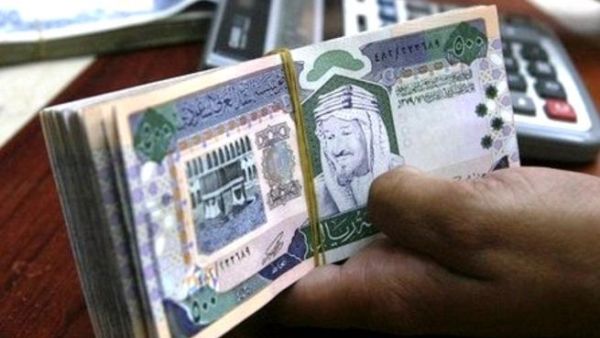Saudi Arabian Monetary Agency’s (SAMA's) net foreign assets will continue to provide an important buffer to protect the economy from gyrations in oil prices in case of an oversupply theme or negative repercussions from tapering, the National Commercial Bank (NCB) said in its report.
The current account increased to reach around $130 billion (or 17.4 percent of GDP), compared to $164.8 billion last year, registering 21.2 percent decrease due to lower oil export earnings. Imports also increased by 8 percent to a record $153.3 billion. Over 10 months in 2013, net foreign assets with SAMA have increased to $709.6 billion from $648.5 billion at the end of 2012, leaving official foreign reserves at a very healthy position covering more than 55.0 months of imports, near a historical record. SAMA's net foreign assets are expected to marginally grow based on the elevated oil revenues in 2013.
However, the NCB report said, unlike 2013, the year 2014 will prove to be a challenging time for policy making. The broader international economic environment will be relatively volatile next year with the long overdue tapering exercise being implemented by the Federal Reserve.
Asset classes across the board including commodities will be negatively impacted, especially that a stronger dollar will reduce the appeal of commodities as alternative investments. The interest rate environment will adjust upward, resulting in a tighter and more costly external borrowing.
Lower crude oil prices and reduced production might materialize, with the increased possibility of oversupply from OPEC and non-OPEC, which will weigh negatively on oil revenues and will reverse the hefty fiscal and current account surpluses of recent years. Nevertheless, the substantial net foreign assets will act as a buffer, allowing the government to maintain an expansionary fiscal policy stance to weather any adverse external shocks.
However, there are a number of key points in the 2014 budget. The NCB said Saudi Arabia will be able to sustain economic growth ahead. First, the elevated capital expenditure will continue to boost nonoil growth in the near to medium-term. It also sends a positive signal to the private sector, which will improve overall confidence levels in the economy.
Moderating global commodity prices and the expected effective nominal appreciation of the Saudi riyal, especially that tapering is dollar positive, imply that growth in the budget can be larger in real terms. Finally, restraining growth in current expenditure could imply higher government savings, and as more resources are injected through specialized credit institutions, this will enhance and support private sector activities.
The NCB projects real GDP growth of 4.1 percent for 2014. The contraction in the oil sector, given an
expected reduction in crude production by around 200 thousand bpd will largely be offset by the nonoil sector, which is estimated to grow by 5.4 percent, driven by the private sector, mainly construction, trade and manufacturing .
The Kingdom's domestic debt fell to SR75.1 billion, 2.7 percent relative to GDP. The bank said government has enough reserves to pay off the entire debt, yet it opts out from such direction given the low cost of servicing debt. The preference is to finance expenditure plans at home or to diversify investments abroad. The report said, a certain level of sovereign debt is necessary as a monetary tool to manage money supply and as a benchmark for pricing corporate bonds and sukuk. The lower debt level on a global scale was cited by S&P and Fitch as a reason for affirming the Kingdom's rating at AA- with a positive outlook in May and September. Despite the decline in overall debt, SAMA opted out from the respite mode this year, issuing T-bills worth SR34 billion, the largest since 2010, to mop excess liquidity. This increased activity from the regulator coincided with credit growth in Q1 that was near 4-year highs.
The government is adamant in pursuing expansionary policy to diversify the economy and ensure sustainable growth. The 2014's budget continues to reflect the government's focus on long-term sustainable development that requires investment in infrastructure, education, health care, and social and economic development projects.
As expected, education and training continued to be central to the aforementioned strategy, receiving 24.6 percent of total allocations, with health accounting for 12.6 percent of the budget.
The 2014 budget release estimates revenues and expenditures at SR855 billion and SR855 billion, respectively, projecting a break-even. However, the bank said that revenues are underestimated, and the government will still manage to record a relatively smaller surplus in 2014. Meanwhile, strong external positions coupled with huge foreign reserves will underpin capital expenditure. On the execution side, the value of government-related awarded construction contracts year-to-date exceeded last year's robust momentum, reaching SR157 billion compared to SR120.4 billion awarded during the same time period in 2012.
The NCB report said oil prices will remain supportive. Based on announced revenues, government assumed next year's oil prices to average $79 per barrel.
“With our forecast of $100 per barrel for the average Arabian light spot prices and a 9.4 MMBD for average oil production in 2014, we project revenues and expenditures at SR973 billion and SR953 billion, respectively. This would lead to a mere budget surplus of SR20 billion, or 0.7 percent of estimated GDP in 2014.
Inflation will likely hover around 3 percent in 2014, underpinned by weaker imported inflation and lower commodity prices. In 2013, prices edged higher, averaging 3.6 percent till date, due to higher food prices. The liquid state of the economy was supportive of higher consumption expenditure, which drove up local food prices that averaged 5.9 percent Y/Y, higher than 4.5 percent Y/Y registered in 2012.
Accelerating the implementation of the mortgage law will positively impact the local real estate market by providing financing to home seekers. With unemployment at an all-time low, 11.7 percent by the end of Q3, 2013, an expected increase in disposable income will boost private consumption expenditure, which posted an 8.5 percent increase last quarter.
However, the dollar-positive tapering and the lower commodity prices will underpin the headline inflation rate, which, in our opinion, will remain in a range-bound movement around 3 percent next year, the NCB report said.

Lower crude oil prices and reduced production might materialize, with the increased possibility of oversupply from OPEC and non-OPEC, which will weigh negatively on oil revenues and will reverse the hefty fiscal and current account surpluses of recent years.







